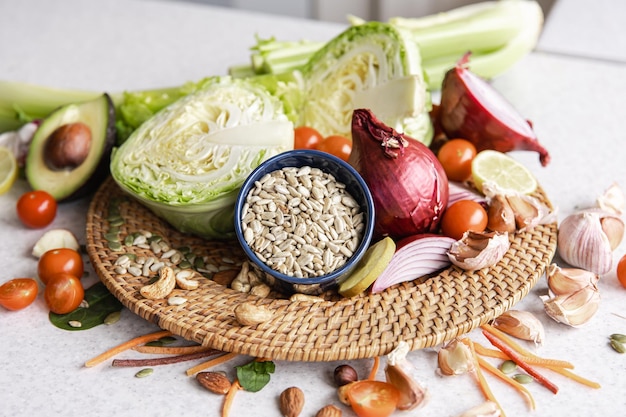Polycystic Ovary Syndrome (PCOS) affects millions of women worldwide, often bringing challenges like irregular periods, weight gain, acne, and difficulty conceiving. While there’s no cure, research shows that lifestyle changes can significantly improve symptoms—and you don’t need a personal trainer, expensive supplements, or high-tech equipment to get started.
This guide delivers 15 evidence-based, practical rehab tips designed for real life. Whether you’re juggling work, family, or a packed schedule, these strategies require minimal gear and fit into everyday routines.
Poor sleep disrupts hormones like insulin and cortisol, worsening PCOS symptoms. Studies show that women with PCOS are more likely to have sleep apnea and insomnia. Aim for 7–9 hours nightly. Create a wind-down routine: dim lights, avoid screens an hour before bed, and keep a consistent sleep schedule—even on weekends.

Natural light within 30 minutes of waking helps regulate circadian rhythms, which influence hormone balance. Just 10–15 minutes of morning sunlight can improve insulin sensitivity and mood. Step outside with your coffee or open the blinds wide—no extra time or gear needed.
High-glycemic foods spike insulin, a key driver of PCOS. Research shows low-GI diets improve menstrual regularity and reduce androgen levels. Opt for whole grains, legumes, non-starchy vegetables, and berries. Swap white bread for sourdough or rye, and white rice for quinoa or lentils.
Protein helps stabilize blood sugar and increases satiety. A study found that higher protein intake was linked to improved insulin response in women with PCOS. Add eggs, Greek yogurt, tofu, beans, or canned tuna to meals—even breakfast. No cooking? Try a protein shake or nut butter on whole grain toast.
You don’t need hour-long workouts. Just 10–15 minutes of movement, 2–3 times daily, improves insulin sensitivity. Try walking after meals, doing bodyweight squats during TV ads, or stretching while on a phone call. Consistency beats intensity.

Eating slowly and without distractions helps regulate hunger hormones and prevents overeating. One study found mindful eating reduced binge eating and improved metabolic markers in PCOS. Start by chewing thoroughly and putting your fork down between bites—even if just for one meal a day.
Cutting sugar is more important than avoiding healthy fats. Trans fats worsen inflammation and insulin resistance, but monounsaturated fats (like olive oil, avocado, nuts) support hormone health. Read labels—sugar hides in sauces, breads, and ‘healthy’ snacks.
Muscle tissue improves insulin sensitivity. You don’t need a gym—use water bottles, backpacks, or resistance bands. Bodyweight exercises like push-ups, lunges, and glute bridges are effective. Just 20 minutes, twice weekly, can make a difference.
Dehydration can mimic hunger and increase cortisol. Aim for 2–3 liters daily. Add lemon, cucumber, or mint for flavor. Keep a reusable bottle nearby as a visual reminder.
Excess caffeine can spike cortisol and disrupt sleep. Some studies suggest high intake may affect estrogen metabolism. Stick to 1–2 cups in the morning. Switch to herbal tea (like chamomile or rooibos) in the afternoon.
Fiber slows sugar absorption and supports gut health. Women with PCOS often have imbalanced gut microbiomes. Aim for 25–30g daily from vegetables, fruits, legumes, chia seeds, and oats. Add a tablespoon of ground flaxseed to yogurt or smoothies—it’s easy and effective.

Chronic stress raises cortisol, worsening insulin resistance and inflammation. Even 5 minutes of deep breathing, journaling, or walking in nature helps. Try box breathing: inhale 4 seconds, hold 4, exhale 4, hold 4. Repeat for 2–5 minutes.
Monitoring your cycle helps identify patterns and response to lifestyle changes. Use a simple app or notebook. Track energy, mood, cravings, and bleeding—even spotting. Over time, you’ll notice trends and progress, even without regular periods.
Home-cooked meals give you control over ingredients. You don’t need to cook every meal—start with 3–4 dinners a week. Batch-cook grains or roast veggies on weekends. Use frozen vegetables—they’re nutritious, affordable, and save time.
Sustainable change comes from consistency, not perfection. Focus on progress: one healthier meal, one extra walk, one night of better sleep. Celebrate small wins. PCOS management is a marathon, not a sprint—and small, daily choices add up.
These 15 tips are backed by research and designed for real life. You don’t need a complete overhaul—just a few mindful changes that fit your schedule. Over time, they can lead to meaningful improvements in energy, mood, weight, and hormone balance.

Wellness

Wellness

Wellness

Wellness

Wellness

Wellness

Wellness

Wellness

Wellness

Wellness

Wellness

Fitness

Health

Fitness

Health

Health